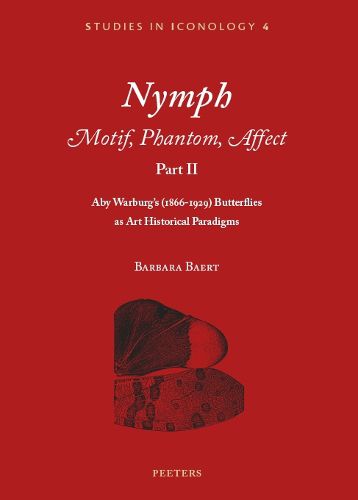Readings Newsletter
Become a Readings Member to make your shopping experience even easier.
Sign in or sign up for free!
You’re not far away from qualifying for FREE standard shipping within Australia
You’ve qualified for FREE standard shipping within Australia
The cart is loading…






This essay, a meditation on the butterfly and its resonance in art
history, is organized in three parts. I begin with Aby Warburg’s
fascination with moths and butterflies as documented by (1) his letters
to Andre Jolles (e.g. the letter from 1900 known as ‘But such high-flown
movements are not for me’), (2) the Kreuzlingen pathological report and
archives by Ludwig Binswanger (1881-1966) preserved in Tubingen, and (3)
the Ninfa fiorentina file in the Warburg Institute. As Seelentierchen
connected to deep cultural affects regarding the soul, resurrection and
immortality. Part 2 of the paper considers the butterfly as paradigm for
the visual medium and the oculocentric paradigms in art history. Indeed,
the butterfly has a specific visual (and sensory) impact on humankind
with its flashy, quick, vibrant and hypnotic wings, its medusian eyes
and its capability to camouflage itself (cf. ‘Sciences diagonales’ by
Roger Caillois (1913-1978)). Hypnosis, Medusa and camouflage are three
important paradigms with which to consider the essence of the image as a
dis/appearing, enchanting, and deceiving medium. In Part 3, the three
paradigms become the basis for new reflections about art history (and
the history of art history) as a study of the butterfly, in short, as
‘lepidopterology’.
$9.00 standard shipping within Australia
FREE standard shipping within Australia for orders over $100.00
Express & International shipping calculated at checkout
This essay, a meditation on the butterfly and its resonance in art
history, is organized in three parts. I begin with Aby Warburg’s
fascination with moths and butterflies as documented by (1) his letters
to Andre Jolles (e.g. the letter from 1900 known as ‘But such high-flown
movements are not for me’), (2) the Kreuzlingen pathological report and
archives by Ludwig Binswanger (1881-1966) preserved in Tubingen, and (3)
the Ninfa fiorentina file in the Warburg Institute. As Seelentierchen
connected to deep cultural affects regarding the soul, resurrection and
immortality. Part 2 of the paper considers the butterfly as paradigm for
the visual medium and the oculocentric paradigms in art history. Indeed,
the butterfly has a specific visual (and sensory) impact on humankind
with its flashy, quick, vibrant and hypnotic wings, its medusian eyes
and its capability to camouflage itself (cf. ‘Sciences diagonales’ by
Roger Caillois (1913-1978)). Hypnosis, Medusa and camouflage are three
important paradigms with which to consider the essence of the image as a
dis/appearing, enchanting, and deceiving medium. In Part 3, the three
paradigms become the basis for new reflections about art history (and
the history of art history) as a study of the butterfly, in short, as
‘lepidopterology’.